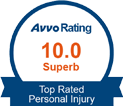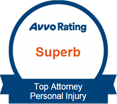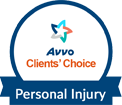Accidents can be traumatic – but the experience is worse if the individuals who caused them flee. According to California’s personal injury laws, you must determine the at-fault party for you to obtain compensation. However, this is not possible in some hit and run accidents. We at The Personal Injury Law Firm can assure you that you are still entitled to compensation even if you can't identify the at-fault party. Read on to learn about how you can obtain compensation after you have been involved in a hit and run accident.
What is a Hit and Run Accident?
The major laws that talk about hit and run accidents in California are Vehicle Code 20001 and Vehicle Code 20002. Vehicle Code 20001 enlists the offense of felony hit and run while Vehicle Code 20002 enlists the crime of misdemeanor hit and run.
According to VC 20002, a person will be held to have committed the offense of misdemeanor hit and run if he does not stop his vehicle after he has caused a crash that resulted in property damage. VC 20001 states that the prosecution may charge a person with the offense of felony hit and run if he fled an accident scene when someone else was killed or injured. The punishment for misdemeanor hit and run is a county jail term of a maximum of six months or a fine that may be up to $1000. The penalty for felony hit and run is a term in state prison that does not exceed three years.
As you can see, hit and run has been criminalized in California. However, its criminalization does not stop drivers from fleeing accident scenes. Law enforcement officers may conduct hit and run investigations and arrest some of them, while others tend to walk away scot-free.
If the individual who was responsible for your injuries is arrested and charged for hit and run, you will be able to pursue compensation against him. Nevertheless, you can still file a claim against the at-fault driver after a hit and run accident if you identified him, and you can prove that he caused the crash. If the person successfully escapes and you have no clue of his identity, you can still pursue compensation from your insurance company.
Is Hitting a Parked Car a Hit and Run?
In the United States, over 64% of hit and run accidents happen in parking areas, and 70% of them involve parked vehicles. Any motorist who hits a parked car should remain at the scene or leave his contact details at a conspicuous place on the damaged car. If he doesn't, he will be deemed to have committed the offense of hit and run.
Why Hit and Run Drivers Flee Accident Scenes
According to California law, there are several steps that car drivers should take after they have been involved in an accident. These steps include:
- Stop the car immediately, or when it is safe to stop without violating any traffic law
- Locate other people who have been involved in the accident, including other drivers, pedestrians, and passengers
- Provide all the people involved in the crash with this information: name, phone number, address, license number, name of insurer, insurance policy number, and car registration number
- Offer reasonable help to any person who has been injured in the accident
- Contact law enforcement officers to arrive at the accident scene
- If there is no person in the accident scene and there is some property damage, the driver should leave his contact details in a conspicuous and secure location
Typically, hit and run drivers flee the accident scene, and they fail to take any of these steps. These drivers come from all walks of life: criminals, professionals, students, the affluent, stay-at-home moms, senior citizens, teenagers, among others.
According to the National Highway Traffic Safety Authority, six people die each day because of a hit and run accident. In 2015, over 2000 hit and run accidents were recorded every day.
So, why do people flee accident scenes? A simple answer to this question is car drivers who are involved in accidents experience the 'stand or flee' emotion, which all human beings have. These drivers are often on the wrong side of the law, and they may foresee the punishments they may face for driving under the influence, being in possession of drugs, driving distractedly, or failing to have liability insurance. Some drivers may even fear if they have an expired license because they believe that the DMV will withdraw their driving privileges. They normally think that if they escape the scene, they won’t be caught.
Other explanations for this behavior include:
- The individual is transporting black market, illegal goods
- The person is driving a stolen vehicle or a car taken without permission
- The driver is in the United States illegally
- The individual is driving his employer's vehicle, and he does not want his employer to know that he has been involved in an accident
- The person has outstanding arrest warrants for other criminal offenses
- The driver has a suspended license, and he does not want it to be revoked permanently
According to the Westat Center for Transportation, Technology, and Safety Research, anytime an individual is involved in an accident, he tends to become emotional. Most of them remain at the scene to argue who should take the blame, while others feel like just leaving the scene. Those that leave the scene are ordinarily scared, and they do not know which steps to take.
Others may fear for their own safety. For instance, a female driver may be involved in an accident with a male motorcyclist in an isolated area. No one may seem injured, and she may flee because she is scared to remain alone with him in the remote location. In such scenarios, protective instincts and physical safety might trump legal safety.
Furthermore, confusion can make a car driver escape the accident scene. For instance, a person who is under the influence of alcohol or drugs or is suffering from dementia may not remember or realize that he should stay.
All in all, just because a driver escaped the accident scene, it does not mean that he can evade his obligations to compensate the injured victims. Concerned witnesses may remember his identity, the appearance of his car, or they may have taken the photos of the accident scene using their smartphones.
What to Do After a Hit and Run Accident
Here are the steps you should take after you have been involved in a hit and run accident:
1. Jot Down the Vehicle Description and Tag Number
The first thing that you should do after you have been involved in a hit and run accident is to record the license plate information of the fleeing driver. If this is not possible, jot down the vehicle description, including its make and color and other details that can distinguish it.
2. Avoid Chasing the Fleeing Car Driver
Stop attempting to become a hero and chase after the fleeing car driver, even if you believe that you can. You may endanger yourself if you pursue the hit and run driver. You never know – the driver could be an armed criminal, or you may end up causing another accident.
3. Contact the Police
Call 911 as soon as possible. Law enforcement officers can locate the hit and run driver and put him under arrest.
4. Ask the Eyewitnesses to Record what they saw
Sometimes, concerned witnesses may jot down the tag and vehicle description of the hit and run driver. As you wait for medical help and law enforcement officers, you can talk to potential eyewitnesses about the accident.
Make sure you record their names, contact information, and any useful detail concerning the accident. You can use the voice recorder of your cell phone to record anything the witnesses might say.
5. Reach out to a Personal Injury Attorney
It can be challenging to recover compensation if law enforcement officers cannot locate the hit and run driver. After you have been involved in a hit and run accident, you should get in touch with a personal injury attorney to discuss your legal options. Most personal injury attorneys offer free consultations, and they work on a contingency fee basis.
If police officers arrest the hit and run driver, you can institute a personal injury claim against him. Otherwise, you should hope that your UIM/UM coverage will cater for your lost wages and medical expenses.
How Police Officers Investigate Hit and Run Accidents
Not all hit and run drivers manage to evade from fulfilling their obligations to the injured victims or facing criminal consequences because of their reckless acts. Law enforcement officers have various strategies that they use to locate the hit and run drivers. Some of these strategies include:
1. Canvass the Accident Scene
Law enforcement officers may speak to the eyewitnesses of the accident. Possibly, there is someone who may have noticed a crucial detail that could assist in the investigations. For instance, perhaps there is an individual who recorded the license plate number of the car as it was speeding away.
2. Utilize Surveillance Footage
If the accident occurred in a residential or business area, the police might utilize surveillance footage to identify the hit and run driver. Most businesses and private residences have security camera systems that may have recorded the accident scene. These recordings will help law enforcement officers to know more details about the vehicle which the hit and run driver used.
3. Social Media Outreach
Of course, it isn’t a great idea for you to post about personal legal issues on social media channels. However, the police frequently utilize social media to identify the potential hit and run suspects. For instance, they may broadcast the incident on the television to find any person who can help identify the hit and run driver. The primary purpose of social media outreach is to encourage individuals who know the hit and run driver to report to the authorities.
How to Obtain Compensation After a Hit and Run Accident
As a hit and run accident victim, you may be unsure whether you can obtain compensation for your injuries, especially if you only have liability insurance. It is crucial for you to determine the at-fault party in a hit and run accident so that you can recover damages.
If the hit and run driver is arrested, your attorney can help you file a personal injury claim against him for compensation. In case the driver remains unidentified, you may seek compensation through your own insurance company.
When you reach out to a hit and run accident attorney, he will offer you a free consultation. During the consultation, he will ask you some essential questions which will be crucial to the success of your claim. After he has gathered all the details about the accident and your injuries, he will advise you on the next step to take.
Your attorney can file a claim with your insurance company if the hit and run driver remains unidentified. On the other hand, in case the authorities identify the at-fault driver, your attorney will institute a claim with his insurance company.
Then, he will negotiate with the insurance companies for compensation. He will make the first offer for settlement, and the insurance company will make a counteroffer. Your attorney will only accept a settlement offer if it is of the value that is equal to the financial loss you incurred because of the accident.
As a general rule, you shouldn’t accept an offer of early settlement from an insurance company without consulting your attorney. Most insurance companies aim to compensate you with the least amount of money as possible for them to make huge profits.
If your attorney fails to reach an agreement with the insurance company, he will seek other means for you to obtain the value of compensation you deserve. For instance, he can utilize alternative dispute resolution mechanisms.
He can also institute a hit and run accident lawsuit at the court to fight for your compensation. The court will award you damages if the civil claim is successful. Below is a quick summary of the steps in a hit and run accident claim:
- Initial consultation with your personal injury attorney - you will discuss with him about the accident, and he will evaluate your case.
- Case investigation – Your attorney will gather all the crucial details about the accident that can help prove your claim.
- Demand package – Your lawyer will send a demand letter to the insurance company with an offer for settlement.
- Filing a hit and run accident lawsuit – If the insurer fails to pay you the compensation you deserve, your lawyer will file a civil claim in court to recover damages.
- Discovery phase – Your attorney will evaluate the case of the opposing insurer and the at-fault driver to discover new ways to prove your claim.
- Mediation – A former or current judge will arrange informal proceedings with your attorney and the insurer to help reach an agreement.
- Trial – If there is still no agreement reached, the matter will proceed to the trial phase, and it is up to the court to decide.
- Appeal – The losing party may file an appeal. Your attorney will make sure you win it.
Is Your Liability Insurance Helpful After a Hit and Run Accident?
According to California law, all drivers should carry liability auto insurance. However, not every motorist obeys the law.
Even if you identify the hit and run driver, you may find out that he does not carry liability insurance, or he doesn't have enough coverage for you to recover damages. In such a scenario, your own liability insurance will not assist you; and it may leave you owing lost income and unpaid medical bills for an accident you did not cause.
Under-Insured/Uninsured Motorist Coverage (UM/UIM)
Under-insured/uninsured motorist coverage can assist you in recovering damages after a hit and run accident if you were not able to identify the at-fault driver or if you identified him, and you discovered that he didn’t carry liability insurance. Uninsured motorist cover protects you, your family members, and other third parties who ride inside your car.
Your personal injury attorney can help you file a claim with your UM/UIM policy provider to recover damages after you have been involved in a hit and run accident. The insurance adjuster will handle it as if it is just a regular liability claim, and your attorney will negotiate with him to enable you to get the value of compensation you deserve.
Furthermore, under-insurance motorist coverage can help you to obtain compensation if the insurance company of the at-fault hit and run driver denies coverage or is insolvent. UIM/UM also offers benefits for crashes that occur if you were in another person’s car, or if you were riding a motorcycle or bike or walking.
Damages for Hit and Run Accident Lawsuits
The court can award three categories of damages to victims of hit and run accidents: special damages, general damages, and punitive damages. Here is a brief discussion of these categories:
1. Special Damages
Special damages cover out-of-pocket expenses that can easily be documented. They are also referred to as economic damages. The main goal of special damages is to ensure that the victims are not left with a financial burden because they incurred costs due to an accident that was not their fault. In a hit and run accident lawsuit, special damages will cover the medical expenses and lost wages.
2. General Damages
The primary purpose of general/non-economic damages is to compensate the victim for the pain and suffering that he went through because of the accident. General damages cover intangible losses that the court can infer from the special damages and the facts and circumstances of your case. Besides pain and suffering, general damages can cover loss of consortium and mental anguish. Even if it is challenging to denote a monetary value on most items of general damages, the court will have to do so.
For the court to award you general damages, you will have to show the jury how the injuries affected your loved ones and impacted your routine. The court will also ascertain if you will be able to continue with your life normally, even if you have recovered from the injuries. Your attorney can hire medical experts to ascertain whether future pain and suffering will be likely. Moreover, the court will examine the quality of your life before and after the accident; and if the accident affected how you carry out your household chores, sporting activities, and hobbies.
3. Punitive Damages
Punitive damages are also termed as exemplary damages. They are not aimed towards compensating the victim but punishing the defendant for his bad conduct. Typically, the court awards punitive damages to victims of hit and run accidents to warn other members of the public not to flee from accident scenes. The amount of punitive damages may be up to three times the total value of compensatory damages.
Wrongful Death Claims for Hit and Run Accidents
It is traumatic and distressing to lose a loved one in a hit and run accident. No amount of money can make up for the loss of your loved one, but it can help ease the financial burden that comes with the loss.
If your loved one was killed in a hit and run accident, you can institute a wrongful death claim against the identified at-fault driver to obtain compensation. According to California’s wrongful death laws, any person who was a dependent of the deceased is entitled to recover damages for the deceased’s death. Dependents include spouses, children, and parents. The damages in a wrongful death claim will cover the burial and funeral expenses, and the total wages your loved one would have earned had he survived.
Find a California Hit and Run Accident Attorney Near Me
At The Personal Injury Law Firm, we have a team of experienced hit and run accident attorneys who will commit themselves to help you obtain the compensation you deserve. We know how hard it is to recover damages after a hit and run accident, and that’s why we are willing to help you. Call us today at 619-625-8707 to jumpstart your case.
 800-492-6718
800-492-6718







